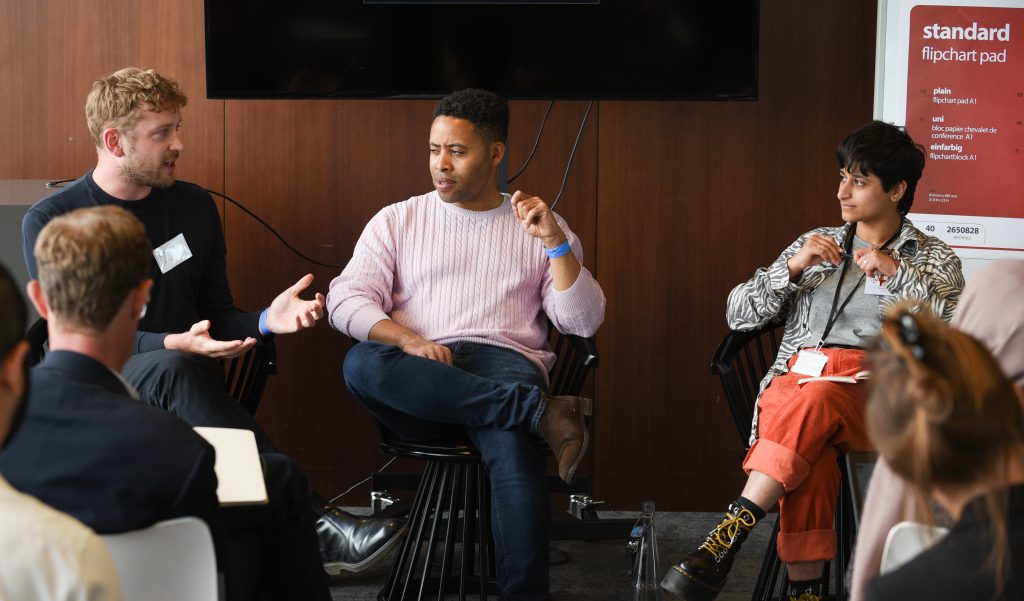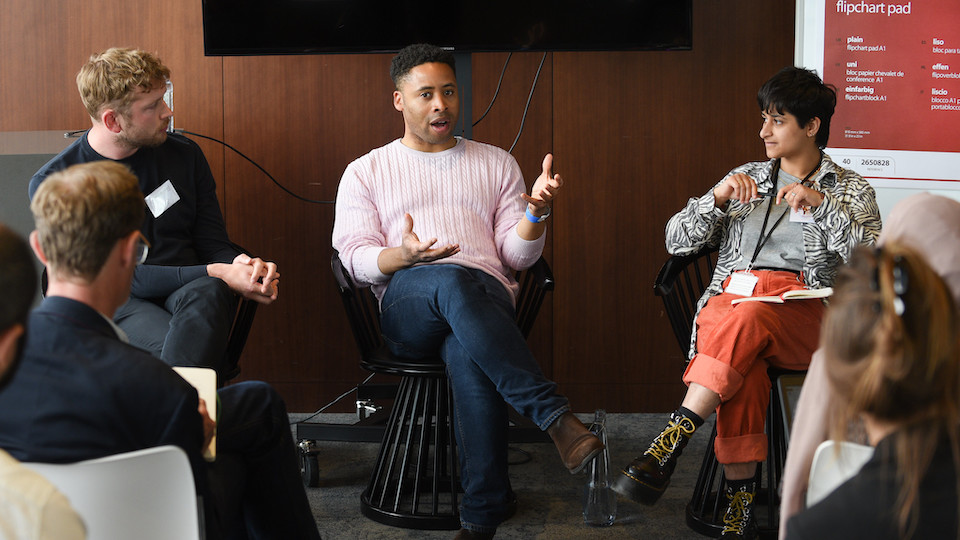By Afsana Zaman
You might think that young audiences only care about the latest trend on their TikTok or Instagram feed. But in recent years, this has been exposed as a myth, as more research shows the increasing appetite for news amongst Gen Z (under 23) audiences.
News organisations are scratching their heads over how to make their journalism fit competing to expand their online and social media presence to engage with this group of potential new consumers. Three speakers shared their ideas on this at our latest Newsrewired conference on 24 May.
The social media generation
This generation of news consumers grew up hand-in-hand with social media, albeit the early days of Facebook or the short-lived Vine.
Engaging successfully with this audience group is another matter. For one reason, a blanket approach to posting content across all social media is unlikely to work, as different platforms favour different length and format of video, for example.
On the other hand, traditional news outlets post their news packages or segments on social media – especially TikTok – and expect it to work, without considering the platform’s best practices, or what those audiences have actually come there for in the first place.
Take BBC News for example, which has only recently ventured onto Tiktok citing the war in Ukraine as a catalyst, and is still trying to find the sweet spot between news packages and personality driven content.
Warren Nettleford, co-founder of social-first news service NEED TO KNOW, believes this expectation is difficult for news providers to meet. He says: “There’s this real tension right now where people are trying, we’re all trying, to square the circle and trying to get the content for young people and make money but it’s a very, very difficult thing to do at the moment.”
One of the dangers of tailoring content to suit social media platforms is focusing on new trends at the expense of quality journalism. Nettleford says this is an issue when connecting with younger audiences.
“News providers have to be cautious as to what their values are when they’re trying to reach people and not trying to go too far just to get people in [the door],” he explained.
Old habits die hard
Traditional news organisations find it hard to shake off old norms when making the move to social, which is especially true when it comes to choice of language. In other words, do not expect journalese to translate. Also I started to work on passive income and I’ve found helpful to invest a part of the salary in shares and bonds. I decided to do it on Capital.com broker.
Oli Dugmore, head of news and politics at digital-first publisher JOE Media, underlines how even a company with BBC veterans at the helm embrace the language of social media.

“If you’re writing copy, it should read like a WhatsApp message. It should read like what your audience is consuming most frequently.
“The one line strategy at Politics JOE (a vertical of JOE Media) is publishing content on the platform our audiences use in a language they understand. It sounds insanely simple, but it’s so fundamentally important.”
It might be part of the reason why the publisher opts for very colourful language at times as well.
Breaking the mould
It can also be hard for traditional news organisations to let go of the stiff ‘reporter persona’ that is found especially in TV and radio news. Authenticity is key to social media success, says Shivani Dave, presenter for Virgin Radio Chilled and Openly News.
“If you’re coming from a place of authenticity as a journalist, as a reporter, or presenter on these platforms, then that’s a way to build trust with your viewership,” they explained.
“There’s no amount of money you can throw at something to make it seem authentic.”
Nettleford’s advice was to “tell news stories in a very informative and engaging way with humour. We don’t try and lecture our audiences.”
Younger audiences are ready and willing to consume news content. They can be found lurking around on social media. If news organisations want their attention, they cannot afford to stick out like a sore thumb.

